
Gustav Heinrich Eberlein (14 July 1847, Spiekershausen (near Staufenberg) - 5 February 1926, Berlin [1] ) was a German sculptor, painter and writer. [2]

Gustav Heinrich Eberlein (14 July 1847, Spiekershausen (near Staufenberg) - 5 February 1926, Berlin [1] ) was a German sculptor, painter and writer. [2]
He was the son of a border guard. At the age of eight, his family moved to Hannoversch Münden, which would be his home for the remainder of his life, despite many years spent elsewhere. His parents lacked the money to provide him with formal artistic training, so he obtained instruction wherever possible, especially from the local goldsmith. [3] In 1866, thanks to the patronage of a pastor who had recognized his talents, he was able to attend the Academy of Fine Arts in Nuremberg. In 1869, he went to Berlin on a scholarship. Three years later, another scholarship enabled him to study in Rome. [4]
Upon his return to Berlin, he received significant support from Martin Gropius. Despite growing success, the next decade was difficult. His three-year-old son died in 1882, then his mother in 1888. This was followed by a divorce in 1891. [4] A year later, he married the Countess Maria von Hertzberg, an aspiring young artist, and was appointed a Professor at the Prussian Academy of Arts the year after that. [3]
In 1900, he came out in strong opposition to the "Lex Heinze" (which, among other things, banned the display of "immoral" art works). That same year, all but a few of his figures were removed from display at the Great Berlin Exhibition, not only because of the law but also, probably, because of his support for French and Belgian sculptors (such as Rodin and Meunier). [4] In fact, as tensions between Germany and its western neighbors grew, Eberlein's outspoken advocacy of peace and disarmament caused him to lose his public commissions.

He was able to find work elsewhere, notably in South America, [3] but his finances never recovered and he was divorced for a second time in 1912. The following year, he auctioned off most of his possessions in anticipation of emigrating, but those plans were put off because of World War I. He received some orders during the war and created a small museum at his studios in Berlin but, after the war, criticism was renewed; especially for his creating a statue of Karl Marx at the same time he was doing one of the former Kaiser. He was especially well known for his small figures and portrait sculpture and produced over 900 works. The majority of his larger bronze monuments were melted down during World War II. Most of his 300 original plaster models were disposed of by the city of Münden after his death. In 1962, work related to a construction project revealed approximately 80 figures and 11 paintings that were preserved and restored between 1983 and 1989. Many are now in the collection of the Deutsches Historisches Museum, Berlin.
He was able to avert destitution only by adopting his housemaid as his daughter, ensuring that he would be cared for by her family. [4] By the time of his death, he was nearly forgotten. He was buried at the Alter St.-Matthäus-Kirchhof in Berlin. [5]
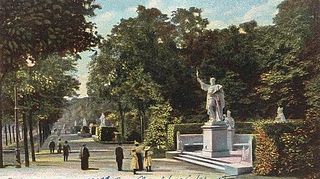
The Siegesallee was a broad boulevard in Berlin, Germany. In 1895, Kaiser Wilhelm II ordered and financed the expansion of an existing avenue, to be adorned with a variety of marble statues. Work was completed in 1901.

Adolf von Donndorf was a German sculptor.
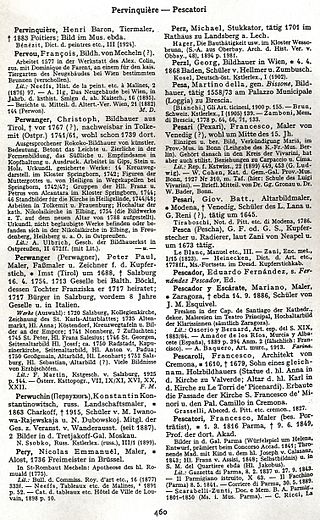
Thieme-Becker is a German biographical dictionary of artists.

Gustav Adolf Carl Closs also as Closs, A., Closs, A.G., Closz, Adolf Gustav was a German painter, illustrator, heraldist and entomologist.
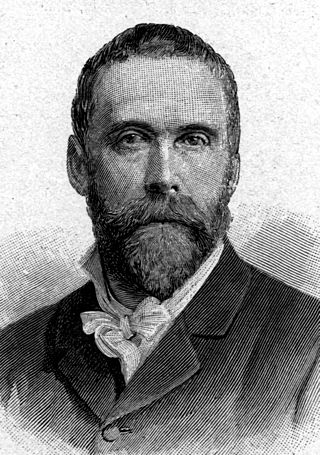
Syrius Eberle was a German sculptor and art professor.

Wilhelm von Rümann was a prominent German sculptor, based in Munich.

Karl Ludwig Manzel was a German sculptor, painter and graphic artist.

Joseph Johann Ludwig Uphues was a German sculptor.

Eugen Boermel, also spelled Börmel was a German sculptor, writer and inventor.

Johannes Boese, also spelled Böse, was a German sculptor and art professor.

August Friedrich Johann Kraus was a German sculptor.

Hugo Hagen was a German sculptor.

Gerhard Adolf Janensch was a German sculptor and medailleur.

Hans Vollmer was a German art historian and encyclopedist.
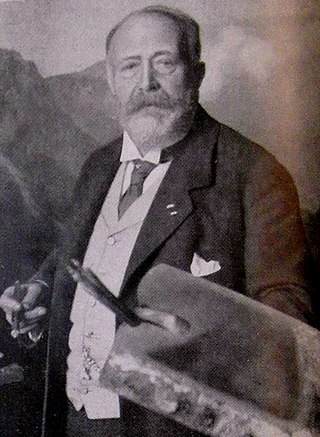
Karl Paul Themistokles von Eckenbrecher was a German landscape and marine painter, in the late Romantic style.

Paul Eduard Maximilian Bürde was a German painter and illustrator.

Johannes Everding was a German sculptor and medallist, primarily known for monuments and fountains.
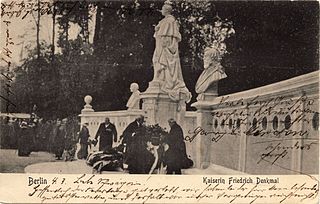
Fritz Gerth was a German sculptor.
Wilhelm Ferdinand Souchon (1825–1876) was a German painter.
Emil Gustav Adolf Glöckner was a German painter in oils and watercolours, and a commercial artist. He painted mythological pictures, portraits, and landscapes.
{{cite encyclopedia}}: |journal= ignored (help) Alternate URL